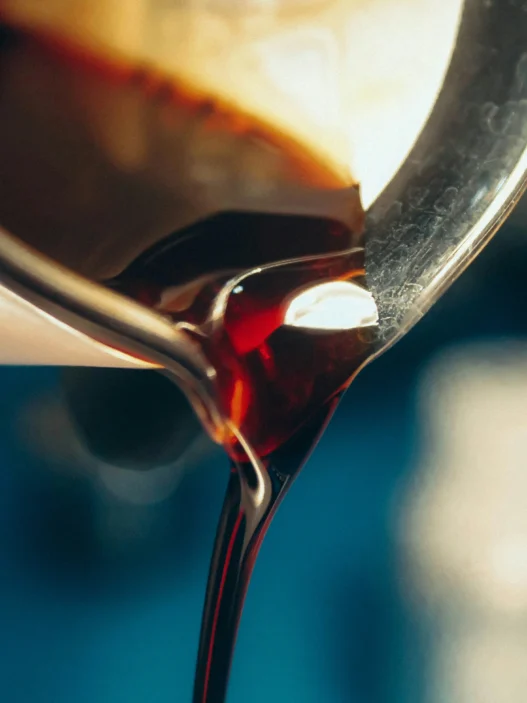Flavone, a type of phenolic compound found in various plants, plays a significant role in everyday life due to its potential health benefits. Studies have shown that flavones possess antioxidant and anti-inflammatory properties, which may help reduce the risk of chronic diseases such as heart disease and cancer. Additionally, flavones have been linked to improved cognitive function and may play a role in maintaining overall health and wellness. A diet rich in flavones, obtained through the consumption of fruits, vegetables, and grains, can contribute to a healthy lifestyle and disease prevention.
Table of Contents:
- 💡 Commercial Applications
- ⚗️ Chemical & Physical Properties
- 🏭 Production & Procurement
- ⚠️ Safety Considerations
- 🔬 Potential Research Directions
- 🧪 Related Compounds
💡 Commercial Applications
Flavone, a natural compound found in fruits, vegetables, and herbs, has various commercial and industrial applications. It is commonly used as a natural yellow dye in the textile industry due to its vibrant color properties. Additionally, Flavone is utilized in the production of cosmetics and skincare products for its antioxidant and anti-inflammatory properties.
In drug and medication applications, Flavone has been studied for its potential health benefits. It has been shown to possess anti-cancer properties by inhibiting the growth of tumors and inducing apoptosis in cancer cells. Furthermore, Flavone has demonstrated anti-inflammatory effects, making it a potential treatment for inflammatory diseases such as arthritis and asthma. Researchers are continuing to explore the therapeutic potential of Flavone in various health conditions.
⚗️ Chemical & Physical Properties
Flavone is a yellow crystalline compound with a floral odor. Its appearance is that of fine, needle-like crystals. When dissolved in solvents, it can give rise to a bright yellow solution, indicative of its color.
The molar mass of Flavone is approximately 222.23 g/mol, with a density of around 1.28 g/cm3. Compared to common household items, Flavone has a higher molar mass and density than water, but lower than many metals and plastics.
The melting point of Flavone is typically around 297°C, while the boiling point is approximately 340°C. These values place Flavone in a range higher than most organic compounds commonly found in households, but lower than many inorganic substances like salt or metals.
Flavone is sparingly soluble in water, exhibiting low solubility due to its hydrophobic nature. It also has a relatively low viscosity in solution. Compared to common household items like salt or sugar, Flavone’s solubility in water is significantly lower, while its viscosity is generally similar.
🏭 Production & Procurement
Flavone, a compound found in various plants, can be produced through a variety of methods. One common method involves the extraction of Flavone from plant material through processes such as solvent extraction or steam distillation. Alternatively, Flavone can also be chemically synthesized in laboratories using specific chemical reactions.
Flavone can be procured through various channels, including pharmaceutical companies, chemical suppliers, and specialty online retailers. Many pharmaceutical companies have dedicated facilities for the production and distribution of Flavone. Chemical suppliers typically offer Flavone in a purified form for research purposes. Online retailers may provide Flavone in smaller quantities for individual researchers or hobbyists.
Once procured, Flavone can be transported in various forms depending on its intended use. For research purposes, Flavone may be transported in powder or liquid form in sealed containers to prevent contamination. For pharmaceutical applications, Flavone may be transported in bulk quantities in specialized containers that meet industry standards for safety and purity. Overall, the transportation of Flavone must adhere to strict regulations to ensure product integrity and safety.
⚠️ Safety Considerations
Safety considerations for Flavone include the potential for skin and eye irritation, as well as respiratory tract irritation if inhaled. It is important to handle Flavone with care and use appropriate personal protective equipment, such as gloves and goggles, when working with this compound. In case of accidental exposure, it is recommended to seek medical advice immediately.
The pharmacology of Flavone involves its ability to act as an antioxidant and to exhibit anti-inflammatory properties. Flavone has been studied for its potential therapeutic effects in various conditions, including cancer, cardiovascular disease, and neurodegenerative disorders. Its mechanism of action involves scavenging reactive oxygen species and modulating inflammatory pathways in the body.
Hazard statements for Flavone include the potential for causing skin and eye irritation, as well as respiratory irritation if inhaled. Flavone may also pose a risk of allergic reactions in some individuals. It is important to store Flavone appropriately and to avoid skin contact or inhalation of its vapors to minimize the risk of adverse effects.
Precautionary statements for Flavone include the importance of wearing protective clothing, gloves, and goggles when handling this compound. It is recommended to work with Flavone in a well-ventilated area to minimize the risk of inhalation exposure. In case of accidental exposure, it is advised to wash the affected area thoroughly with soap and water and seek medical attention if symptoms persist.
🔬 Potential Research Directions
One potential research direction for flavone is its potential therapeutic applications in disease prevention and treatment. Studies have shown that flavone possesses antioxidant, anti-inflammatory, and anticancer properties, making it a promising candidate for further investigation in various medical contexts.
Another line of research could focus on exploring the mechanisms of action of flavone at the molecular level. By elucidating how flavone interacts with specific cellular pathways and targets, researchers can gain a better understanding of its biological effects and potential applications in drug development.
Additionally, investigations into the bioavailability and pharmacokinetics of flavone could help optimize its use as a therapeutic agent. Understanding how flavone is absorbed, distributed, metabolized, and excreted in the body can inform dosing regimens and formulation strategies to maximize its effectiveness in clinical settings.
🧪 Related Compounds
One similar compound to Flavone is Flavonol, which is a subclass of flavonoids that shares a similar structure with Flavone. Flavonols have a hydroxyl group attached at the C3 position, distinguishing them from Flavone, which lacks this hydroxyl group. Common examples of Flavonols include quercetin, kaempferol, and myricetin.
Another compound related to Flavone is Isoflavone, which is a type of flavonoid with a similar structure but with a rearranged carbon skeleton. Isoflavones are found in legumes, especially soybeans, and are known for their potential health benefits, particularly in hormone-related health issues. Genistein and daidzein are common examples of Isoflavones.
Chalcone is another compound that shares a similar structure with Flavone. It is an open-chain flavonoid precursor that can be enzymatically isomerized into a flavanone. Chalcones are known for their antioxidant properties and are found in fruits, vegetables, and other plant-based foods. Common examples of Chalcones include butein and isoliquiritigenin.




